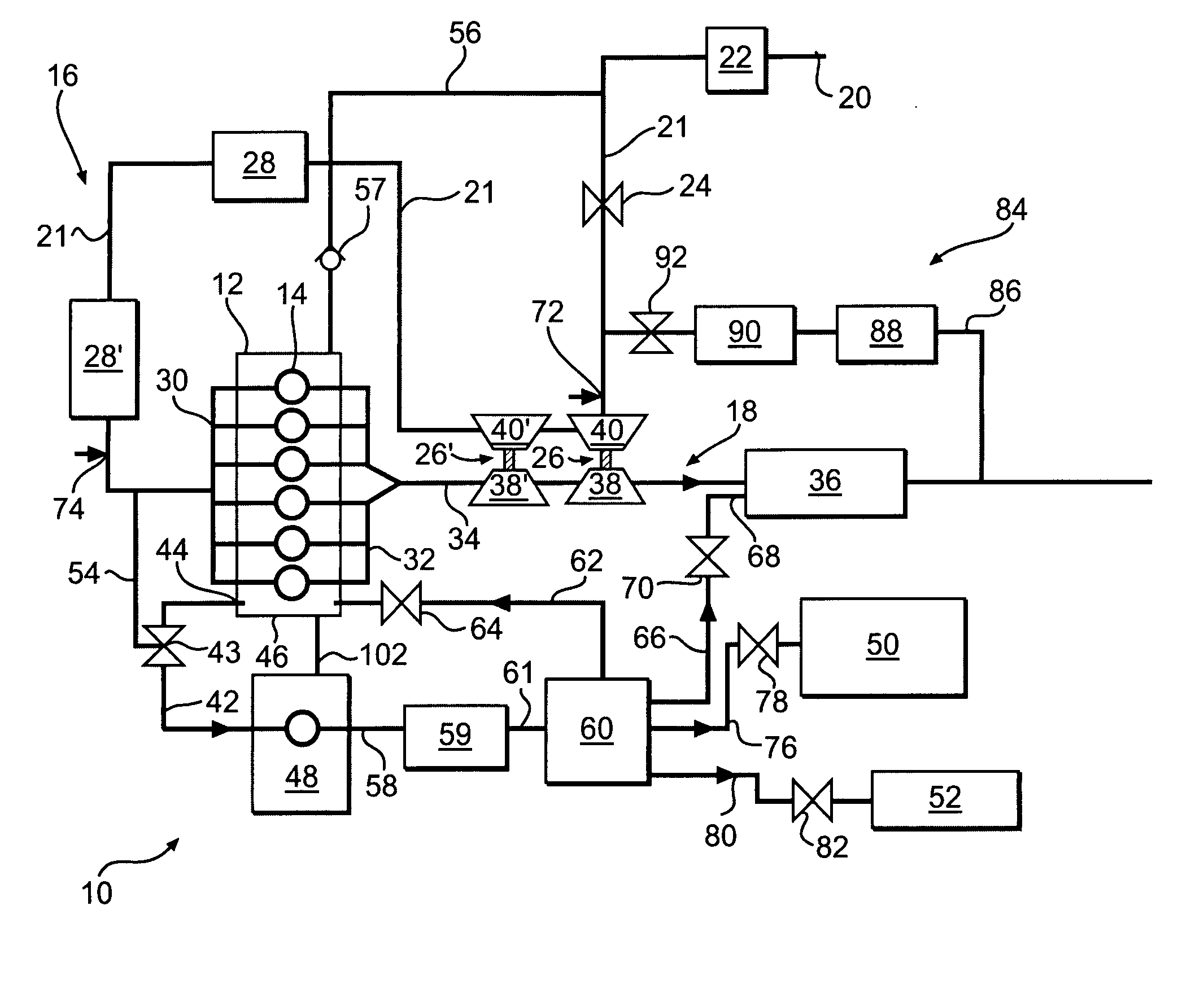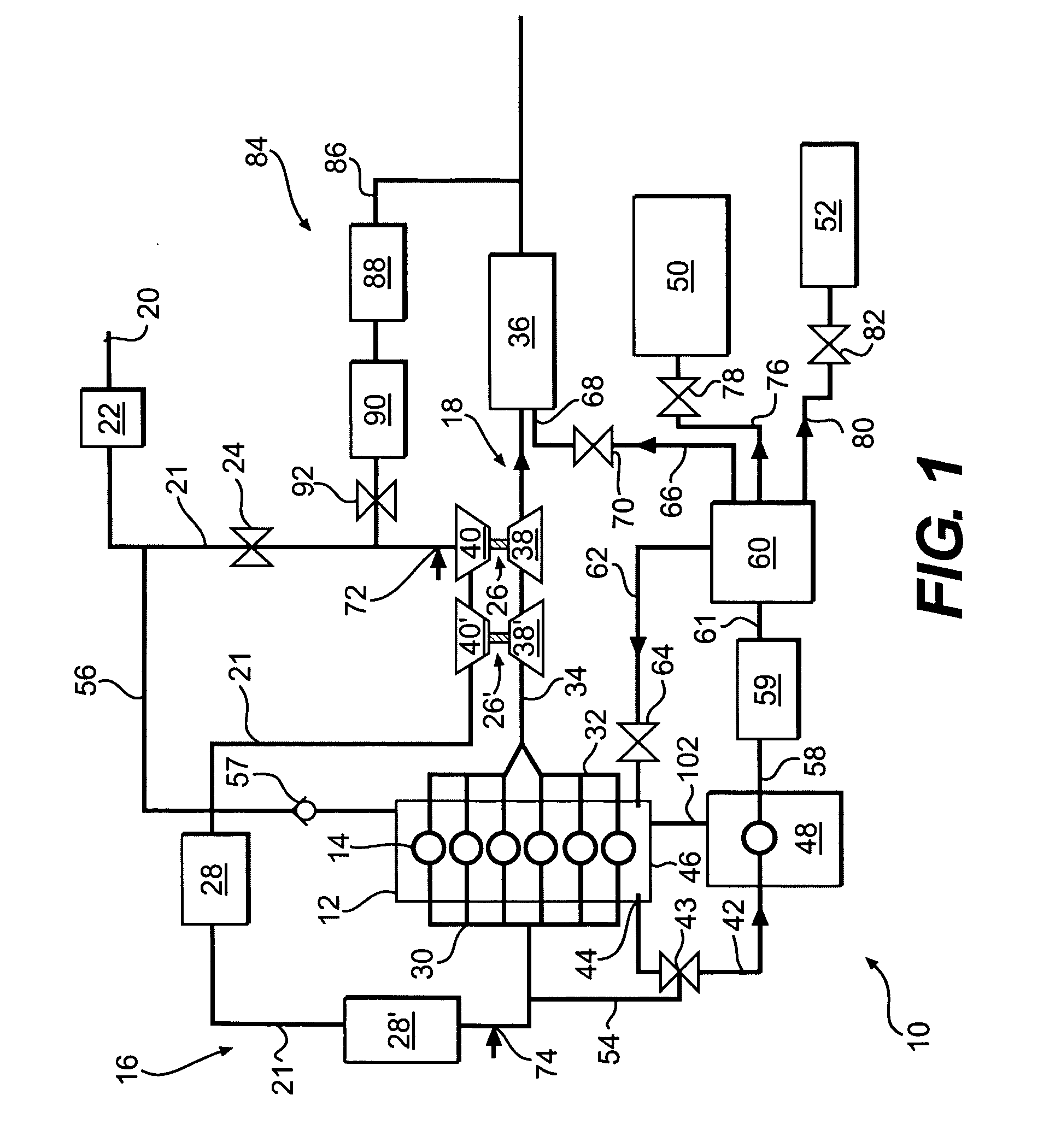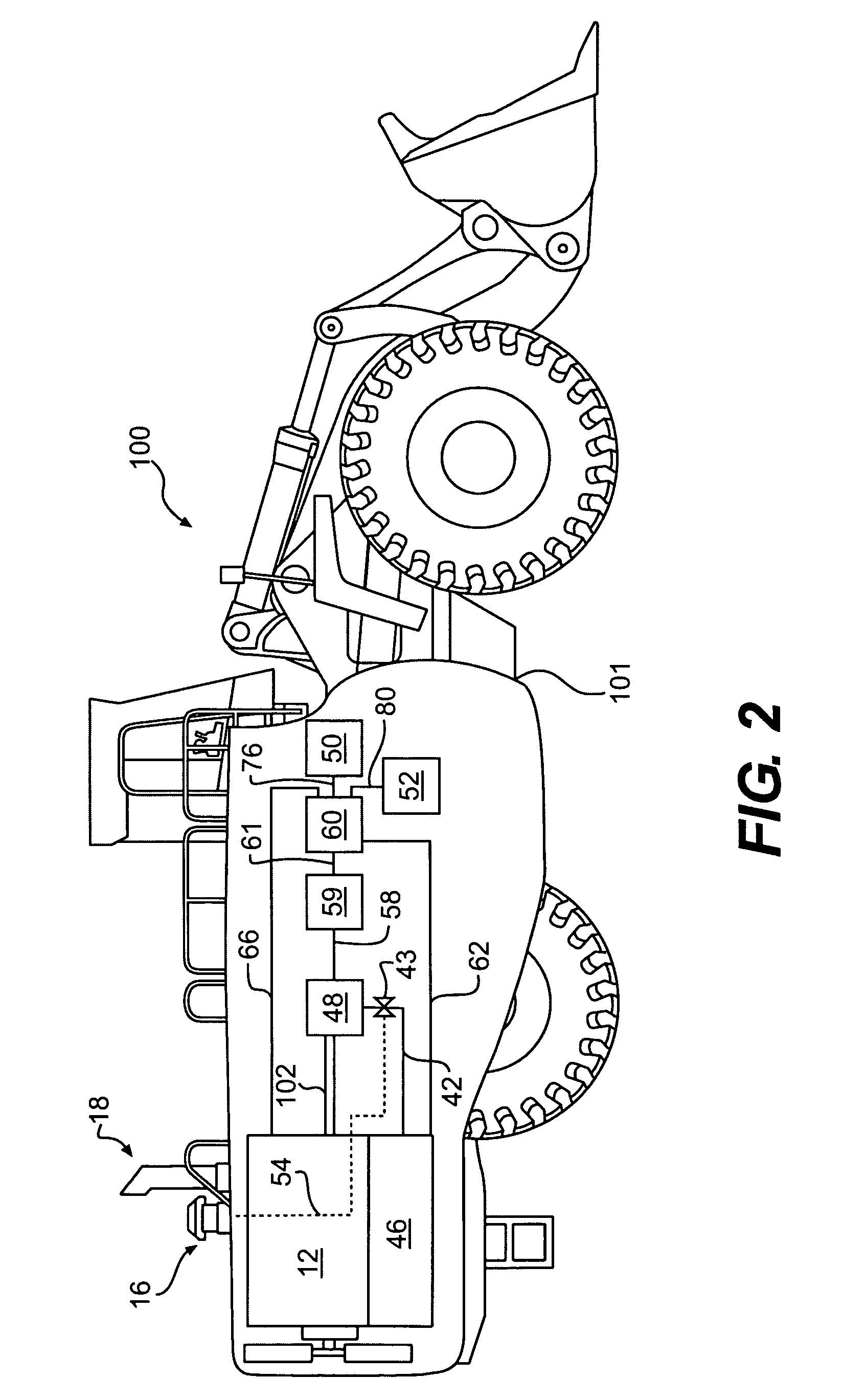Closed crankcase ventilation system
a technology of ventilation system and crankcase, which is applied in the direction of mechanical equipment, machines/engines, and non-fuel substance addition to fuel, etc., can solve the problems of affecting the sealing or fitting of the piston and the cylinder, placing undesirable parts of the crankcase emissions directly into the environment, and fouling the compressor wheel in a relatively short time period, so as to enhance the venting of crankcase emissions and enhance the flow of crankcase emissions
- Summary
- Abstract
- Description
- Claims
- Application Information
AI Technical Summary
Benefits of technology
Problems solved by technology
Method used
Image
Examples
Embodiment Construction
[0016]FIG. 1 illustrates an exemplary closed crankcase ventilation (CCV) system 10. CCV system 10 may include an internal combustion engine 12. Engine 12 may include combustion cylinders 14 for generating power. Engine 12 may be provided with an air intake system 16 and an exhaust system 18. Air intake system 16 may include various components including, for example, intake opening 20, air filter 22, throttle valve 24, one or more turbochargers 26, 26′, one or more cooling modules 28, 28′, and intake manifold 30. The various components of air intake system 16 may be located along an intake flow path, such as, for example, intake conduit 21. Exhaust system 18 may include various components including, for example, exhaust manifold 32, exhaust conduit 34, and aftertreatment module 36.
[0017] The one or more turbochargers 26, 26′ may be composed of components forming a part of both the air intake system 16 and the exhaust system 18. Turbocharger 26 is composed of a turbine section 38 loc...
PUM
 Login to View More
Login to View More Abstract
Description
Claims
Application Information
 Login to View More
Login to View More - R&D
- Intellectual Property
- Life Sciences
- Materials
- Tech Scout
- Unparalleled Data Quality
- Higher Quality Content
- 60% Fewer Hallucinations
Browse by: Latest US Patents, China's latest patents, Technical Efficacy Thesaurus, Application Domain, Technology Topic, Popular Technical Reports.
© 2025 PatSnap. All rights reserved.Legal|Privacy policy|Modern Slavery Act Transparency Statement|Sitemap|About US| Contact US: help@patsnap.com



